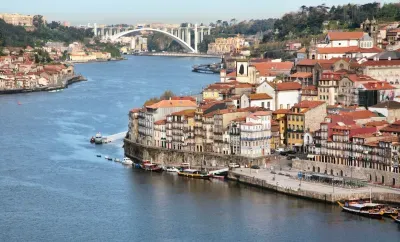
The Se
The fairly austere and imposing cathedral in Porto (Sé do Porto) was mostly built during the 12th and 13th centuries in the Romanesque style. However, it didn't really reach completion until the 16th century and even after this it was considerably remodelled and extended in the Baroque style.
Occupying the high ground to the east of the city, the cathedral looks westwards over the historic centre. From its commanding position the church does have something of a feel of a fortress about it - particularly the crenelations which run around the building, somewhat reflecting the defensive city walls not far away.
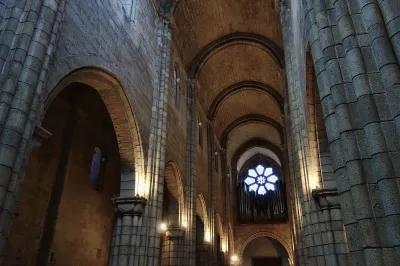
Originally the design of the cathedral was fairly simple. Two cupola-topped square towers flanking the main portal with a beautiful Romanesque rose window providing the only notable feature. Inside a narrow nave with a barrel vaulted ceiling is flanked by two aisles. With the exception of the main altar the interior is very restrained mostly comprising of bare stone.
This is how the cathedral remained for around a hundred years until its first additions; the 14th century funerary chapel and elegant Gothic cloisters.
The Cloisters
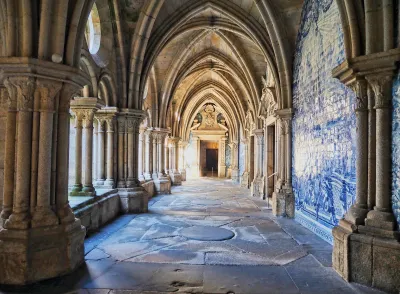
Built during the reign of King João I, who was married to Philippa of Lancaster in the cathedral, the cloisters are one of the finest features of the Sé. A mix of the original Gothic arches and vaulted ceilings along with much more recent Baroque azulejo tiles, the arcades that surround the courtyard are quite beautiful. The blue and white tiles tell the depict scenes from the life of Mary and from the poem Metamorphoses by Ovid.
The cloisters actually have an upper level, where you are essentially walking on the roof of the arcades below. Here too you will find azulejo tiled walls, however the depictions aren't really what you would expect in a cathedral. The tiles show idyllic scenes of country life, ladies wearing fine dresses and, perhaps most bizzare, men on horseback hunting an ostrich with dogs!
Baroque era
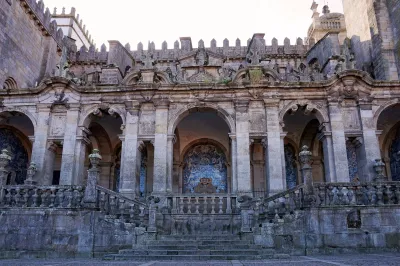
Like many of Porto's older churches the cathedral saw extensive renovations in the 18th century with extensive Baroque remodelling and additions. The most notable addition was the Baroque loggia to the southern aspect of the cathedral. This elegant arcade and staircase were designed by the celebrated Italian architect Nicolau Nasoni.
Further Baroque modifications to the cathedral included replacing the main portal, a new apse and a much embellished high altar. The latter is a wonderful creation in by renown goldsmiths Santos Pacheco and completed by Miguel Francisco da Silva.
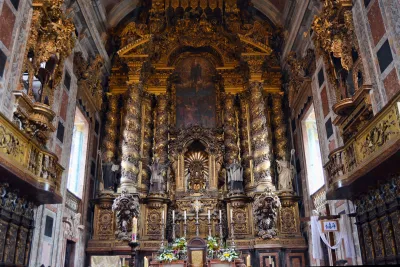
Other parts of the cathedral not to be missed include the Chapter House and the adjoining Treasure Room. Just upstairs from the cloisters, the Chapter House is where members of the religious order would gather. This room is quite extravagantly decorated with carved wooden panels depicting bible scenes, a gold-gilt altarpiece and most notably, a beautifully painted ceiling featuring fourteen panels painted by Giovanni Battista Pichini.
The Treasure Room holds a collection of religious objects such as silk bishop's robes, early leather-bound bibles and various gem-studded ecclesiastical artifacts wrought in gold and silver.
Address
Phone
Attraction type
